Search for Indicators
All Data
Indicator Gauge Icon Legend
Legend Colors
Red is bad, green is good, blue is not statistically different/neutral.
Compared to Distribution
 the value is in the best half of communities.
the value is in the best half of communities.
 the value is in the 2nd worst quarter of communities.
the value is in the 2nd worst quarter of communities.
 the value is in the worst quarter of communities.
the value is in the worst quarter of communities.
Compared to Target
 meets target;
meets target;  does not meet target.
does not meet target.
Compared to a Single Value
 lower than the comparison value;
lower than the comparison value;
 higher than the comparison value;
higher than the comparison value;
 not statistically different from comparison value.
not statistically different from comparison value.
Trend

 non-significant change over time;
non-significant change over time; 
 significant change over time;
significant change over time;  no change over time.
no change over time.
Compared to Prior Value
 higher than the previous measurement period;
higher than the previous measurement period;
 lower than the previous measurement period;
lower than the previous measurement period;
 no statistically different change from previous measurement period.
no statistically different change from previous measurement period.
State: Ohio
Health / Alcohol & Drug Use
Value
Compared to:
State: Ohio Adults who Drink Excessively
State: Ohio Adults who Drink Excessively
20.0%
(2021)
Compared to:
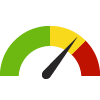




U.S. States
The distribution is based on data from 50 U.S. states and the District of Columbia.

US Value
(18.1%)
The regional value is compared to the national value.

Prior Value
(19.0%)
Prior Value compares a measured value with the previously measured value. Confidence intervals were taken into account in determining the direction of the comparison.

Trend
This comparison measures the indicator’s values over multiple time periods.<br>The Mann-Kendall Test for Statistical Significance is used to evaluate the trend<br>over 4 to 10 periods of measure, subject to data availability and comparability.
40.4
Deaths per 100,000 population
(2018-2020)
Compared to:




U.S. States
The distribution is based on data from 50 U.S. states and the District of Columbia.

US Value
(23.5)
The regional value is compared to the national value.

Prior Value
(42.0)
Prior Value compares a measured value with the previously measured value. Confidence intervals were taken into account in determining the direction of the comparison.
State: Ohio Death Rate due to Drug Poisoning
State: Ohio Death Rate due to Drug Poisoning
42.2
Deaths per 100,000 population
(2019-2021)
Compared to:




U.S. States
The distribution is based on data from 50 U.S. states and the District of Columbia.

US Value
(27.2)
The regional value is compared to the national value.

HP 2030 Target
(20.7)
<div>SU-03: Reduce drug overdose deaths <strong>(LEADING HEALTH INDICATOR)</strong></div>
1.3%
(2023)
Compared to:




US Value
(1.3%)
The regional value is compared to the national value.

Prior Value
(1.3%)
Prior Value compares a measured value with the previously measured value. Confidence intervals were not taken into account in determining the direction of the comparison.

Trend
This comparison measures the indicator’s values over multiple time periods.<br>The Mann-Kendall Test for Statistical Significance is used to evaluate the trend<br>over 4 to 10 periods of measure, subject to data availability and comparability.
State: Ohio Teens who Binge Drink: High School Students
State: Ohio Teens who Binge Drink: High School Students
12.6%
(2021)
Compared to:




U.S. States
The distribution is based on data from 41 U.S. states and the District of Columbia.

US Value
(10.5%)
The regional value is compared to the national value.

Prior Value
(13.4%)
Prior Value compares a measured value with the previously measured value. Confidence intervals were taken into account in determining the direction of the comparison.
State: Ohio Teens who have Used Methamphetamines
State: Ohio Teens who have Used Methamphetamines
1.6%
(2021)
Compared to:
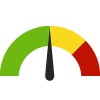


U.S. States
The distribution is based on data from 36 U.S. states and the District of Columbia.

US Value
(1.8%)
The regional value is compared to the national value.
State: Ohio Teens who Use Alcohol
State: Ohio Teens who Use Alcohol
22.8%
(2021)
Compared to:




U.S. States
The distribution is based on data from 43 U.S. states and the District of Columbia.

US Value
(22.7%)
The regional value is compared to the national value.

Prior Value
(25.9%)
Prior Value compares a measured value with the previously measured value. Confidence intervals were taken into account in determining the direction of the comparison.
State: Ohio Teens who Use Marijuana: High School Students
State: Ohio Teens who Use Marijuana: High School Students
13.3%
(2021)
Compared to:
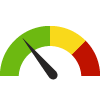



U.S. States
The distribution is based on data from 43 U.S. states and the District of Columbia.

US Value
(15.8%)
The regional value is compared to the national value.

Prior Value
(15.8%)
Prior Value compares a measured value with the previously measured value. Confidence intervals were taken into account in determining the direction of the comparison.
State: Ohio
Health / Cancer
Value
Compared to:
State: Ohio Age-Adjusted Death Rate due to Breast Cancer
State: Ohio Age-Adjusted Death Rate due to Breast Cancer
21.0
Deaths per 100,000 females
(2016-2020)
Compared to:
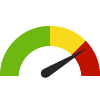





U.S. States
The distribution is based on data from 50 U.S. states and the District of Columbia.

US Value
(19.6)
The regional value is compared to the national value.

Prior Value
(21.6)
Prior Value compares a measured value with the previously measured value. Confidence intervals were taken into account in determining the direction of the comparison.

Trend
This comparison measures the indicator’s values over multiple time periods.<br>The Mann-Kendall Test for Statistical Significance is used to evaluate the trend<br>over 4 to 10 periods of measure, subject to data availability and comparability.

HP 2030 Target
(15.3)
State: Ohio Age-Adjusted Death Rate due to Cancer
State: Ohio Age-Adjusted Death Rate due to Cancer
166.1
Deaths per 100,000 population
(2016-2020)
Compared to:






U.S. States
The distribution is based on data from 50 U.S. states and the District of Columbia.

US Value
(149.4)
The regional value is compared to the national value.

Prior Value
(169.4)
Prior Value compares a measured value with the previously measured value. Confidence intervals were taken into account in determining the direction of the comparison.

Trend
This comparison measures the indicator’s values over multiple time periods.<br>The Mann-Kendall Test for Statistical Significance is used to evaluate the trend<br>over 4 to 10 periods of measure, subject to data availability and comparability.

HP 2030 Target
(122.7)
State: Ohio Age-Adjusted Death Rate due to Colorectal Cancer
State: Ohio Age-Adjusted Death Rate due to Colorectal Cancer
14.5
Deaths per 100,000 population
(2016-2020)
Compared to:






U.S. States
The distribution is based on data from 50 U.S. states and the District of Columbia.

US Value
(13.1)
The regional value is compared to the national value.

Prior Value
(14.8)
Prior Value compares a measured value with the previously measured value. Confidence intervals were taken into account in determining the direction of the comparison.

Trend
This comparison measures the indicator’s values over multiple time periods.<br>The Mann-Kendall Test for Statistical Significance is used to evaluate the trend<br>over 4 to 10 periods of measure, subject to data availability and comparability.

HP 2030 Target
(8.9)
State: Ohio Age-Adjusted Death Rate due to Lung Cancer
State: Ohio Age-Adjusted Death Rate due to Lung Cancer
42.9
Deaths per 100,000 population
(2016-2020)
Compared to:






U.S. States
The distribution is based on data from 50 U.S. states and the District of Columbia.

US Value
(35.0)
The regional value is compared to the national value.

Prior Value
(45.0)
Prior Value compares a measured value with the previously measured value. Confidence intervals were taken into account in determining the direction of the comparison.

Trend
This comparison measures the indicator’s values over multiple time periods.<br>The Mann-Kendall Test for Statistical Significance is used to evaluate the trend<br>over 4 to 10 periods of measure, subject to data availability and comparability.

HP 2030 Target
(25.1)
State: Ohio Age-Adjusted Death Rate due to Prostate Cancer
State: Ohio Age-Adjusted Death Rate due to Prostate Cancer
19.3
Deaths per 100,000 males
(2016-2020)
Compared to:






U.S. States
The distribution is based on data from 50 U.S. states and the District of Columbia.

US Value
(18.8)
The regional value is compared to the national value.

Prior Value
(19.4)
Prior Value compares a measured value with the previously measured value. Confidence intervals were taken into account in determining the direction of the comparison.

Trend
This comparison measures the indicator’s values over multiple time periods.<br>The Mann-Kendall Test for Statistical Significance is used to evaluate the trend<br>over 4 to 10 periods of measure, subject to data availability and comparability.

HP 2030 Target
(16.9)
State: Ohio All Cancer Incidence Rate
State: Ohio All Cancer Incidence Rate
465.3
Cases per 100,000 population
(2016-2020)
Compared to:





U.S. States
The distribution is based on data from 48 U.S. states and the District of Columbia.

US Value
(442.3)
The regional value is compared to the national value.

Prior Value
(471.5)
Prior Value compares a measured value with the previously measured value. Confidence intervals were taken into account in determining the direction of the comparison.

Trend
This comparison measures the indicator’s values over multiple time periods.<br>The Mann-Kendall Test for Statistical Significance is used to evaluate the trend<br>over 4 to 10 periods of measure, subject to data availability and comparability.
State: Ohio Breast Cancer Incidence Rate
State: Ohio Breast Cancer Incidence Rate
129.5
Cases per 100,000 females
(2016-2020)
Compared to:





U.S. States
The distribution is based on data from 48 U.S. states and the District of Columbia.

US Value
(127.0)
The regional value is compared to the national value.

Prior Value
(130.6)
Prior Value compares a measured value with the previously measured value. Confidence intervals were taken into account in determining the direction of the comparison.

Trend
This comparison measures the indicator’s values over multiple time periods.<br>The Mann-Kendall Test for Statistical Significance is used to evaluate the trend<br>over 4 to 10 periods of measure, subject to data availability and comparability.
State: Ohio Cancer: Medicare Population
State: Ohio Cancer: Medicare Population
12.0%
(2022)
Compared to:





U.S. States
The distribution is based on data from 50 U.S. states and the District of Columbia.

US Value
(12.0%)
The regional value is compared to the national value.

Prior Value
(11.0%)
Prior Value compares a measured value with the previously measured value. Confidence intervals were not taken into account in determining the direction of the comparison.

Trend
This comparison measures the indicator’s values over multiple time periods.<br>The Mann-Kendall Test for Statistical Significance is used to evaluate the trend<br>over 4 to 10 periods of measure, subject to data availability and comparability.
State: Ohio Cervical Cancer Incidence Rate
State: Ohio Cervical Cancer Incidence Rate
7.8
Cases per 100,000 females
(2016-2020)
Compared to:





U.S. States
The distribution is based on data from 48 U.S. states and the District of Columbia.

US Value
(7.5)
The regional value is compared to the national value.

Prior Value
(7.9)
Prior Value compares a measured value with the previously measured value. Confidence intervals were taken into account in determining the direction of the comparison.

Trend
This comparison measures the indicator’s values over multiple time periods.<br>The Mann-Kendall Test for Statistical Significance is used to evaluate the trend<br>over 4 to 10 periods of measure, subject to data availability and comparability.
State: Ohio Colorectal Cancer Incidence Rate
State: Ohio Colorectal Cancer Incidence Rate
39.1
Cases per 100,000 population
(2016-2020)
Compared to:





U.S. States
The distribution is based on data from 48 U.S. states and the District of Columbia.

US Value
(36.5)
The regional value is compared to the national value.

Prior Value
(40.5)
Prior Value compares a measured value with the previously measured value. Confidence intervals were taken into account in determining the direction of the comparison.

Trend
This comparison measures the indicator’s values over multiple time periods.<br>The Mann-Kendall Test for Statistical Significance is used to evaluate the trend<br>over 4 to 10 periods of measure, subject to data availability and comparability.
State: Ohio Households that Received Cancer Medical Services
State: Ohio Households that Received Cancer Medical Services
8.6%
(2023)
Compared to:




US Value
(8.3%)
The regional value is compared to the national value.

Prior Value
(8.7%)
Prior Value compares a measured value with the previously measured value. Confidence intervals were not taken into account in determining the direction of the comparison.

Trend
This comparison measures the indicator’s values over multiple time periods.<br>The Mann-Kendall Test for Statistical Significance is used to evaluate the trend<br>over 4 to 10 periods of measure, subject to data availability and comparability.
State: Ohio Lung and Bronchus Cancer Incidence Rate
State: Ohio Lung and Bronchus Cancer Incidence Rate
64.7
Cases per 100,000 population
(2016-2020)
Compared to:





U.S. States
The distribution is based on data from 48 U.S. states and the District of Columbia.

US Value
(54.0)
The regional value is compared to the national value.

Prior Value
(66.7)
Prior Value compares a measured value with the previously measured value. Confidence intervals were taken into account in determining the direction of the comparison.

Trend
This comparison measures the indicator’s values over multiple time periods.<br>The Mann-Kendall Test for Statistical Significance is used to evaluate the trend<br>over 4 to 10 periods of measure, subject to data availability and comparability.
State: Ohio Mammography Screening: Medicare Population
State: Ohio Mammography Screening: Medicare Population
49.0%
(2022)
Compared to:





U.S. States
The distribution is based on data from 50 U.S. states and the District of Columbia.

US Value
(47.0%)
The regional value is compared to the national value.

Prior Value
(48.0%)
Prior Value compares a measured value with the previously measured value. Confidence intervals were not taken into account in determining the direction of the comparison.

Trend
This comparison measures the indicator’s values over multiple time periods.<br>The Mann-Kendall Test for Statistical Significance is used to evaluate the trend<br>over 4 to 10 periods of measure, subject to data availability and comparability.
State: Ohio Oral Cavity and Pharynx Cancer Incidence Rate
State: Ohio Oral Cavity and Pharynx Cancer Incidence Rate
12.6
Cases per 100,000 population
(2016-2020)
Compared to:





U.S. States
The distribution is based on data from 48 U.S. states and the District of Columbia.

US Value
(11.9)
The regional value is compared to the national value.

Prior Value
(12.5)
Prior Value compares a measured value with the previously measured value. Confidence intervals were taken into account in determining the direction of the comparison.

Trend
This comparison measures the indicator’s values over multiple time periods.<br>The Mann-Kendall Test for Statistical Significance is used to evaluate the trend<br>over 4 to 10 periods of measure, subject to data availability and comparability.
State: Ohio Prostate Cancer Incidence Rate
State: Ohio Prostate Cancer Incidence Rate
114.1
Cases per 100,000 males
(2016-2020)
Compared to:





U.S. States
The distribution is based on data from 48 U.S. states and the District of Columbia.

US Value
(110.5)
The regional value is compared to the national value.

Prior Value
(112.5)
Prior Value compares a measured value with the previously measured value. Confidence intervals were taken into account in determining the direction of the comparison.

Trend
This comparison measures the indicator’s values over multiple time periods.<br>The Mann-Kendall Test for Statistical Significance is used to evaluate the trend<br>over 4 to 10 periods of measure, subject to data availability and comparability.
State: Ohio
Health / Diabetes
Value
Compared to:
State: Ohio Adults Who Bought Medications for Diabetes
State: Ohio Adults Who Bought Medications for Diabetes
11.4%
(2023)
Compared to:




US Value
(10.7%)
The regional value is compared to the national value.

Prior Value
(11.5%)
Prior Value compares a measured value with the previously measured value. Confidence intervals were not taken into account in determining the direction of the comparison.

Trend
This comparison measures the indicator’s values over multiple time periods.<br>The Mann-Kendall Test for Statistical Significance is used to evaluate the trend<br>over 4 to 10 periods of measure, subject to data availability and comparability.
State: Ohio Age-Adjusted Death Rate due to Diabetes
State: Ohio Age-Adjusted Death Rate due to Diabetes
28.4
Deaths per 100,000 population
(2020-2022)
Compared to:



Prior Value
(27.6)
Prior Value compares a measured value with the previously measured value. Confidence intervals were not taken into account in determining the direction of the comparison.

Trend
This comparison measures the indicator’s values over multiple time periods.<br>The Mann-Kendall Test for Statistical Significance is used to evaluate the trend<br>over 4 to 10 periods of measure, subject to data availability and comparability.
State: Ohio Diabetes: Medicare Population
State: Ohio Diabetes: Medicare Population
25.0%
(2022)
Compared to:





U.S. States
The distribution is based on data from 50 U.S. states and the District of Columbia.

US Value
(24.0%)
The regional value is compared to the national value.

Prior Value
(25.0%)
Prior Value compares a measured value with the previously measured value. Confidence intervals were not taken into account in determining the direction of the comparison.

Trend
This comparison measures the indicator’s values over multiple time periods.<br>The Mann-Kendall Test for Statistical Significance is used to evaluate the trend<br>over 4 to 10 periods of measure, subject to data availability and comparability.
State: Ohio Diabetic Monitoring: Medicare Population
State: Ohio Diabetic Monitoring: Medicare Population
87.9%
(2019)
Compared to:





U.S. States
The distribution is based on data from 50 U.S. states and the District of Columbia.

US Value
(87.5%)
The regional value is compared to the national value.

Prior Value
(87.7%)
Prior Value compares a measured value with the previously measured value. Confidence intervals were taken into account in determining the direction of the comparison.

Trend
This comparison measures the indicator’s values over multiple time periods.<br>The Mann-Kendall Test for Statistical Significance is used to evaluate the trend<br>over 4 to 10 periods of measure, subject to data availability and comparability.
State: Ohio
Health / Disabilities
Value
Compared to:
State: Ohio Adults with an Independent Living Difficulty
State: Ohio Adults with an Independent Living Difficulty
6.3%
(2022)
Compared to:




US Value
(6.0%)
The regional value is compared to the national value.

Prior Value
(6.0%)
Prior Value compares a measured value with the previously measured value. Confidence intervals were taken into account in determining the direction of the comparison.

Trend
This comparison measures the indicator’s values over multiple time periods.<br>The Mann-Kendall Test for Statistical Significance is used to evaluate the trend<br>over 4 to 10 periods of measure, subject to data availability and comparability.
State: Ohio Adults with Disability Living in Poverty
State: Ohio Adults with Disability Living in Poverty
28.6%
(2018-2022)
Compared to:




U.S. States
The distribution is based on data from 50 U.S. states and the District of Columbia.

US Value
(24.9%)
The regional value is compared to the national value.

Trend
This comparison measures the indicator’s values over multiple time periods.<br>The Mann-Kendall Test for Statistical Significance is used to evaluate the trend<br>over 4 to 10 periods of measure, subject to data availability and comparability.
State: Ohio Children with a Disability
State: Ohio Children with a Disability
5.2%
(2018-2022)
Compared to:



US Value
(4.5%)
The regional value is compared to the national value.

Trend
This comparison measures the indicator’s values over multiple time periods.<br>The Mann-Kendall Test for Statistical Significance is used to evaluate the trend<br>over 4 to 10 periods of measure, subject to data availability and comparability.
State: Ohio Persons with a Cognitive Difficulty
State: Ohio Persons with a Cognitive Difficulty
5.9%
(2018-2022)
Compared to:



US Value
(5.3%)
The regional value is compared to the national value.

Trend
This comparison measures the indicator’s values over multiple time periods.<br>The Mann-Kendall Test for Statistical Significance is used to evaluate the trend<br>over 4 to 10 periods of measure, subject to data availability and comparability.
State: Ohio Persons with a Disability
State: Ohio Persons with a Disability
14.1%
(2018-2022)
Compared to:



US Value
(12.9%)
The regional value is compared to the national value.

Trend
This comparison measures the indicator’s values over multiple time periods.<br>The Mann-Kendall Test for Statistical Significance is used to evaluate the trend<br>over 4 to 10 periods of measure, subject to data availability and comparability.
State: Ohio Persons with a Hearing Difficulty
State: Ohio Persons with a Hearing Difficulty
3.7%
(2018-2022)
Compared to:



US Value
(3.6%)
The regional value is compared to the national value.

Trend
This comparison measures the indicator’s values over multiple time periods.<br>The Mann-Kendall Test for Statistical Significance is used to evaluate the trend<br>over 4 to 10 periods of measure, subject to data availability and comparability.
State: Ohio Persons with a Self-Care Difficulty
State: Ohio Persons with a Self-Care Difficulty
2.6%
(2018-2022)
Compared to:



US Value
(2.6%)
The regional value is compared to the national value.

Trend
This comparison measures the indicator’s values over multiple time periods.<br>The Mann-Kendall Test for Statistical Significance is used to evaluate the trend<br>over 4 to 10 periods of measure, subject to data availability and comparability.
State: Ohio Persons with a Vision Difficulty
State: Ohio Persons with a Vision Difficulty
2.4%
(2018-2022)
Compared to:



US Value
(2.4%)
The regional value is compared to the national value.

Trend
This comparison measures the indicator’s values over multiple time periods.<br>The Mann-Kendall Test for Statistical Significance is used to evaluate the trend<br>over 4 to 10 periods of measure, subject to data availability and comparability.
State: Ohio Persons with an Ambulatory Difficulty
State: Ohio Persons with an Ambulatory Difficulty
7.3%
(2018-2022)
Compared to:



US Value
(6.7%)
The regional value is compared to the national value.

Trend
This comparison measures the indicator’s values over multiple time periods.<br>The Mann-Kendall Test for Statistical Significance is used to evaluate the trend<br>over 4 to 10 periods of measure, subject to data availability and comparability.
State: Ohio
Health / Family Planning
Value
Compared to:
State: Ohio Teen Birth Rate: 15-17
State: Ohio Teen Birth Rate: 15-17
6.1
Live births per 1,000 females aged 15-17
(2022)
Compared to:




US Value
(5.6 in 2021)
The regional value is compared to the national value. The source for the national value is Centers for Disease Control and Prevention, National Center for Health Statistics

Prior Value
(6.3)
Prior Value compares a measured value with the previously measured value. Confidence intervals were not taken into account in determining the direction of the comparison.

Trend
This comparison measures the indicator’s values over multiple time periods.<br>The Mann-Kendall Test for Statistical Significance is used to evaluate the trend<br>over 4 to 10 periods of measure, subject to data availability and comparability.
State: Ohio Teen Pregnancy Rate
State: Ohio Teen Pregnancy Rate
19.5
Pregnancies per 1,000 females aged 15-17
(2016)
Compared to:



Prior Value
(20.5)
Prior Value compares a measured value with the previously measured value. Confidence intervals were not taken into account in determining the direction of the comparison.

Trend
This comparison measures the indicator’s values over multiple time periods.<br>The Mann-Kendall Test for Statistical Significance is used to evaluate the trend<br>over 4 to 10 periods of measure, subject to data availability and comparability.
State: Ohio Teens who have ever had Sexual Intercourse
State: Ohio Teens who have ever had Sexual Intercourse
33.1%
(2021)
Compared to:




U.S. States
The distribution is based on data from 31 U.S. states and the District of Columbia.

US Value
(30.0%)
The regional value is compared to the national value.

Prior Value
(37.7%)
Prior Value compares a measured value with the previously measured value. Confidence intervals were taken into account in determining the direction of the comparison.
State: Ohio
Health / Food Safety
Value
Compared to:
State: Ohio Salmonella Infection Incidence Rate
State: Ohio Salmonella Infection Incidence Rate
13.7
Cases per 100,000 population
(2019)
Compared to:




Prior Value
(12.9)
Prior Value compares a measured value with the previously measured value. Confidence intervals were not taken into account in determining the direction of the comparison.

Trend
This comparison measures the indicator’s values over multiple time periods.<br>The Mann-Kendall Test for Statistical Significance is used to evaluate the trend<br>over 4 to 10 periods of measure, subject to data availability and comparability.

HP 2030 Target
(11.5)
State: Ohio
Health / Health Care Access & Quality
Value
Compared to:
State: Ohio Adults with Health Insurance
State: Ohio Adults with Health Insurance
91.9%
(2022)
Compared to:
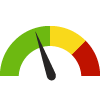




U.S. States
The distribution is based on data from 50 U.S. states and the District of Columbia.

US Value
(88.7%)
The regional value is compared to the national value.

Prior Value
(91.1%)
Prior Value compares a measured value with the previously measured value. Confidence intervals were taken into account in determining the direction of the comparison.

Trend
This comparison measures the indicator’s values over multiple time periods.<br>The Mann-Kendall Test for Statistical Significance is used to evaluate the trend<br>over 4 to 10 periods of measure, subject to data availability and comparability.
State: Ohio Adults with Health Insurance: 18+
State: Ohio Adults with Health Insurance: 18+
85.2%
(2023)
Compared to:





U.S. States
The distribution is based on data from 50 U.S. states and the District of Columbia.

US Value
(85.9%)
The regional value is compared to the national value.

Prior Value
(91.4%)
Prior Value compares a measured value with the previously measured value. Confidence intervals were not taken into account in determining the direction of the comparison.

Trend
This comparison measures the indicator’s values over multiple time periods.<br>The Mann-Kendall Test for Statistical Significance is used to evaluate the trend<br>over 4 to 10 periods of measure, subject to data availability and comparability.
State: Ohio Adults with HMO Health Insurance
State: Ohio Adults with HMO Health Insurance
13.2%
(2023)
Compared to:



US Value
(14.2%)
The regional value is compared to the national value.

Prior Value
(13.2%)
Prior Value compares a measured value with the previously measured value. Confidence intervals were not taken into account in determining the direction of the comparison.
State: Ohio Adults with Medicaid Health Insurance
State: Ohio Adults with Medicaid Health Insurance
12.4%
(2023)
Compared to:




US Value
(11.9%)
The regional value is compared to the national value.

Prior Value
(11.9%)
Prior Value compares a measured value with the previously measured value. Confidence intervals were not taken into account in determining the direction of the comparison.

Trend
This comparison measures the indicator’s values over multiple time periods.<br>The Mann-Kendall Test for Statistical Significance is used to evaluate the trend<br>over 4 to 10 periods of measure, subject to data availability and comparability.
State: Ohio Adults with Medicare Health Insurance
State: Ohio Adults with Medicare Health Insurance
20.1%
(2023)
Compared to:




US Value
(18.6%)
The regional value is compared to the national value.

Prior Value
(22.3%)
Prior Value compares a measured value with the previously measured value. Confidence intervals were not taken into account in determining the direction of the comparison.

Trend
This comparison measures the indicator’s values over multiple time periods.<br>The Mann-Kendall Test for Statistical Significance is used to evaluate the trend<br>over 4 to 10 periods of measure, subject to data availability and comparability.
State: Ohio Adults with Military Health Insurance
State: Ohio Adults with Military Health Insurance
4.9%
(2023)
Compared to:




US Value
(4.6%)
The regional value is compared to the national value.

Prior Value
(5.4%)
Prior Value compares a measured value with the previously measured value. Confidence intervals were not taken into account in determining the direction of the comparison.

Trend
This comparison measures the indicator’s values over multiple time periods.<br>The Mann-Kendall Test for Statistical Significance is used to evaluate the trend<br>over 4 to 10 periods of measure, subject to data availability and comparability.
State: Ohio Adults with Other Health Insurance
State: Ohio Adults with Other Health Insurance
6.3%
(2023)
Compared to:




US Value
(6.2%)
The regional value is compared to the national value.

Prior Value
(6.4%)
Prior Value compares a measured value with the previously measured value. Confidence intervals were not taken into account in determining the direction of the comparison.

Trend
This comparison measures the indicator’s values over multiple time periods.<br>The Mann-Kendall Test for Statistical Significance is used to evaluate the trend<br>over 4 to 10 periods of measure, subject to data availability and comparability.
State: Ohio Adults with POS Health Insurance
State: Ohio Adults with POS Health Insurance
1.8%
(2023)
Compared to:




US Value
(1.9%)
The regional value is compared to the national value.

Prior Value
(1.8%)
Prior Value compares a measured value with the previously measured value. Confidence intervals were not taken into account in determining the direction of the comparison.

Trend
This comparison measures the indicator’s values over multiple time periods.<br>The Mann-Kendall Test for Statistical Significance is used to evaluate the trend<br>over 4 to 10 periods of measure, subject to data availability and comparability.
State: Ohio Adults with PPO Health Insurance
State: Ohio Adults with PPO Health Insurance
32.5%
(2023)
Compared to:




US Value
(33.9%)
The regional value is compared to the national value.

Prior Value
(32.9%)
Prior Value compares a measured value with the previously measured value. Confidence intervals were not taken into account in determining the direction of the comparison.

Trend
This comparison measures the indicator’s values over multiple time periods.<br>The Mann-Kendall Test for Statistical Significance is used to evaluate the trend<br>over 4 to 10 periods of measure, subject to data availability and comparability.
State: Ohio Children with Health Insurance
State: Ohio Children with Health Insurance
95.5%
(2022)
Compared to:





U.S. States
The distribution is based on data from 50 U.S. states and the District of Columbia.

US Value
(94.9%)
The regional value is compared to the national value.

Prior Value
(94.9%)
Prior Value compares a measured value with the previously measured value. Confidence intervals were taken into account in determining the direction of the comparison.

Trend
This comparison measures the indicator’s values over multiple time periods.<br>The Mann-Kendall Test for Statistical Significance is used to evaluate the trend<br>over 4 to 10 periods of measure, subject to data availability and comparability.
State: Ohio Community Spending on Health Care
State: Ohio Community Spending on Health Care
8.7%
(2023)
Compared to:



US Value
(8.0%)
The regional value is compared to the national value.

Prior Value
(8.8%)
Prior Value compares a measured value with the previously measured value. Confidence intervals were not taken into account in determining the direction of the comparison.
State: Ohio Health Insurance Spending-to-Income Ratio
State: Ohio Health Insurance Spending-to-Income Ratio
7.0%
(2023)
Compared to:



U.S. States
The distribution is based on data from 50 U.S. states and the District of Columbia.

Prior Value
(7.1%)
Prior Value compares a measured value with the previously measured value. Confidence intervals were not taken into account in determining the direction of the comparison.
12.4%
(2023)
Compared to:




US Value
(11.8%)
The regional value is compared to the national value.

Prior Value
(12.2%)
Prior Value compares a measured value with the previously measured value. Confidence intervals were not taken into account in determining the direction of the comparison.

Trend
This comparison measures the indicator’s values over multiple time periods.<br>The Mann-Kendall Test for Statistical Significance is used to evaluate the trend<br>over 4 to 10 periods of measure, subject to data availability and comparability.
State: Ohio Households that Received Maternity Care Services
State: Ohio Households that Received Maternity Care Services
5.3%
(2023)
Compared to:




US Value
(5.8%)
The regional value is compared to the national value.

Prior Value
(5.5%)
Prior Value compares a measured value with the previously measured value. Confidence intervals were not taken into account in determining the direction of the comparison.

Trend
This comparison measures the indicator’s values over multiple time periods.<br>The Mann-Kendall Test for Statistical Significance is used to evaluate the trend<br>over 4 to 10 periods of measure, subject to data availability and comparability.
28.4%
(2023)
Compared to:




US Value
(28.0%)
The regional value is compared to the national value.

Prior Value
(29.0%)
Prior Value compares a measured value with the previously measured value. Confidence intervals were not taken into account in determining the direction of the comparison.

Trend
This comparison measures the indicator’s values over multiple time periods.<br>The Mann-Kendall Test for Statistical Significance is used to evaluate the trend<br>over 4 to 10 periods of measure, subject to data availability and comparability.
25.2%
(2023)
Compared to:




US Value
(25.9%)
The regional value is compared to the national value.

Prior Value
(24.5%)
Prior Value compares a measured value with the previously measured value. Confidence intervals were not taken into account in determining the direction of the comparison.

Trend
This comparison measures the indicator’s values over multiple time periods.<br>The Mann-Kendall Test for Statistical Significance is used to evaluate the trend<br>over 4 to 10 periods of measure, subject to data availability and comparability.
9.9%
(2023)
Compared to:




US Value
(10.8%)
The regional value is compared to the national value.

Prior Value
(9.7%)
Prior Value compares a measured value with the previously measured value. Confidence intervals were not taken into account in determining the direction of the comparison.

Trend
This comparison measures the indicator’s values over multiple time periods.<br>The Mann-Kendall Test for Statistical Significance is used to evaluate the trend<br>over 4 to 10 periods of measure, subject to data availability and comparability.
State: Ohio Medicare Healthcare Costs
State: Ohio Medicare Healthcare Costs
$10,025
Dollars per enrollee
(2015)
Compared to:




US Value
($9,729)
The regional value is compared to the national value.

Prior Value
($10,171)
Prior Value compares a measured value with the previously measured value. Confidence intervals were not taken into account in determining the direction of the comparison.

Trend
This comparison measures the indicator’s values over multiple time periods.<br>The Mann-Kendall Test for Statistical Significance is used to evaluate the trend<br>over 4 to 10 periods of measure, subject to data availability and comparability.
State: Ohio Non-Physician Primary Care Provider Rate
State: Ohio Non-Physician Primary Care Provider Rate
140
Providers per 100,000 population
(2023)
Compared to:




U.S. States
The distribution is based on data from 50 U.S. states and the District of Columbia.

Prior Value
(130)
Prior Value compares a measured value with the previously measured value. Confidence intervals were not taken into account in determining the direction of the comparison.

Trend
This comparison measures the indicator’s values over multiple time periods.<br>The Mann-Kendall Test for Statistical Significance is used to evaluate the trend<br>over 4 to 10 periods of measure, subject to data availability and comparability.
State: Ohio Persons with Health Insurance
State: Ohio Persons with Health Insurance
92.2%
(2021)
Compared to:





U.S. States
The distribution is based on data from 50 U.S. states and the District of Columbia.

Prior Value
(91.9%)
Prior Value compares a measured value with the previously measured value. Confidence intervals were taken into account in determining the direction of the comparison.

Trend
This comparison measures the indicator’s values over multiple time periods.<br>The Mann-Kendall Test for Statistical Significance is used to evaluate the trend<br>over 4 to 10 periods of measure, subject to data availability and comparability.

HP 2030 Target
(92.4%)
<div>AHS-01: Increase the proportion of people with health insurance <strong>(LEADING HEALTH INDICATOR)</strong></div>
State: Ohio Persons with Private Health Insurance Only
State: Ohio Persons with Private Health Insurance Only
55.3%
(2022)
Compared to:




US Value
(54.8%)
The regional value is compared to the national value.

Prior Value
(54.9%)
Prior Value compares a measured value with the previously measured value. Confidence intervals were not taken into account in determining the direction of the comparison.

Trend
This comparison measures the indicator’s values over multiple time periods.<br>The Mann-Kendall Test for Statistical Significance is used to evaluate the trend<br>over 4 to 10 periods of measure, subject to data availability and comparability.
State: Ohio Persons with Public Health Insurance Only
State: Ohio Persons with Public Health Insurance Only
26.0%
(2022)
Compared to:




US Value
(24.8%)
The regional value is compared to the national value.

Prior Value
(25.9%)
Prior Value compares a measured value with the previously measured value. Confidence intervals were not taken into account in determining the direction of the comparison.

Trend
This comparison measures the indicator’s values over multiple time periods.<br>The Mann-Kendall Test for Statistical Significance is used to evaluate the trend<br>over 4 to 10 periods of measure, subject to data availability and comparability.
State: Ohio Persons without Health Insurance
State: Ohio Persons without Health Insurance
5.9%
(2022)
Compared to:



Prior Value
(6.5%)
Prior Value compares a measured value with the previously measured value. Confidence intervals were taken into account in determining the direction of the comparison.

Trend
This comparison measures the indicator’s values over multiple time periods.<br>The Mann-Kendall Test for Statistical Significance is used to evaluate the trend<br>over 4 to 10 periods of measure, subject to data availability and comparability.
State: Ohio Preventable Hospital Stays: Medicare Population
State: Ohio Preventable Hospital Stays: Medicare Population
3,044.0
Discharges per 100,000 Medicare enrollees
(2022)
Compared to:





U.S. States
The distribution is based on data from 50 U.S. states and the District of Columbia.

US Value
(2,677.0)
The regional value is compared to the national value.

Prior Value
(3,113.0)
Prior Value compares a measured value with the previously measured value. Confidence intervals were not taken into account in determining the direction of the comparison.

Trend
This comparison measures the indicator’s values over multiple time periods.<br>The Mann-Kendall Test for Statistical Significance is used to evaluate the trend<br>over 4 to 10 periods of measure, subject to data availability and comparability.
State: Ohio Primary Care Provider Rate
State: Ohio Primary Care Provider Rate
75
Providers per 100,000 population
(2021)
Compared to:




U.S. States
The distribution is based on data from 50 U.S. states and the District of Columbia.

Prior Value
(77)
Prior Value compares a measured value with the previously measured value. Confidence intervals were not taken into account in determining the direction of the comparison.

Trend
This comparison measures the indicator’s values over multiple time periods.<br>The Mann-Kendall Test for Statistical Significance is used to evaluate the trend<br>over 4 to 10 periods of measure, subject to data availability and comparability.
State: Ohio
Health / Health Information Technology
Value
Compared to:
31.3%
(2023)
Compared to:



US Value
(31.8%)
The regional value is compared to the national value.

Prior Value
(33.5%)
Prior Value compares a measured value with the previously measured value. Confidence intervals were not taken into account in determining the direction of the comparison.
State: Ohio Adults with Internet Access
State: Ohio Adults with Internet Access
90.8%
(2023)
Compared to:





U.S. States
The distribution is based on data from 50 U.S. states and the District of Columbia.

US Value
(91.7%)
The regional value is compared to the national value.

Prior Value
(95.0%)
Prior Value compares a measured value with the previously measured value. Confidence intervals were not taken into account in determining the direction of the comparison.

Trend
This comparison measures the indicator’s values over multiple time periods.<br>The Mann-Kendall Test for Statistical Significance is used to evaluate the trend<br>over 4 to 10 periods of measure, subject to data availability and comparability.
State: Ohio Households with a Computer
State: Ohio Households with a Computer
87.2%
(2023)
Compared to:





U.S. States
The distribution is based on data from 50 U.S. states and the District of Columbia.

US Value
(88.2%)
The regional value is compared to the national value.

Prior Value
(86.5%)
Prior Value compares a measured value with the previously measured value. Confidence intervals were not taken into account in determining the direction of the comparison.

Trend
This comparison measures the indicator’s values over multiple time periods.<br>The Mann-Kendall Test for Statistical Significance is used to evaluate the trend<br>over 4 to 10 periods of measure, subject to data availability and comparability.
State: Ohio Households with a Smartphone
State: Ohio Households with a Smartphone
83.3%
(2023)
Compared to:





U.S. States
The distribution is based on data from 50 U.S. states and the District of Columbia.

US Value
(84.7%)
The regional value is compared to the national value.

Prior Value
(81.6%)
Prior Value compares a measured value with the previously measured value. Confidence intervals were not taken into account in determining the direction of the comparison.

Trend
This comparison measures the indicator’s values over multiple time periods.<br>The Mann-Kendall Test for Statistical Significance is used to evaluate the trend<br>over 4 to 10 periods of measure, subject to data availability and comparability.
State: Ohio Households with an Internet Subscription
State: Ohio Households with an Internet Subscription
87.8%
(2018-2022)
Compared to:




U.S. States
The distribution is based on data from 50 U.S. states and the District of Columbia.

US Value
(88.5%)
The regional value is compared to the national value.

Trend
This comparison measures the indicator’s values over multiple time periods.<br>The Mann-Kendall Test for Statistical Significance is used to evaluate the trend<br>over 4 to 10 periods of measure, subject to data availability and comparability.
92.8%
(2018-2022)
Compared to:




U.S. States
The distribution is based on data from 50 U.S. states and the District of Columbia.

US Value
(94.0%)
The regional value is compared to the national value.

Trend
This comparison measures the indicator’s values over multiple time periods.<br>The Mann-Kendall Test for Statistical Significance is used to evaluate the trend<br>over 4 to 10 periods of measure, subject to data availability and comparability.
State: Ohio Persons with an Internet Subscription
State: Ohio Persons with an Internet Subscription
90.5%
(2018-2022)
Compared to:




U.S. States
The distribution is based on data from 50 U.S. states and the District of Columbia.

US Value
(91.0%)
The regional value is compared to the national value.

Trend
This comparison measures the indicator’s values over multiple time periods.<br>The Mann-Kendall Test for Statistical Significance is used to evaluate the trend<br>over 4 to 10 periods of measure, subject to data availability and comparability.
State: Ohio
Health / Heart Disease & Stroke
Value
Compared to:
State: Ohio Adults Who Bought Medications for Cholesterol
State: Ohio Adults Who Bought Medications for Cholesterol
17.9%
(2023)
Compared to:




US Value
(17.1%)
The regional value is compared to the national value.

Prior Value
(17.9%)
Prior Value compares a measured value with the previously measured value. Confidence intervals were not taken into account in determining the direction of the comparison.

Trend
This comparison measures the indicator’s values over multiple time periods.<br>The Mann-Kendall Test for Statistical Significance is used to evaluate the trend<br>over 4 to 10 periods of measure, subject to data availability and comparability.
26.0%
(2023)
Compared to:




US Value
(24.4%)
The regional value is compared to the national value.

Prior Value
(26.0%)
Prior Value compares a measured value with the previously measured value. Confidence intervals were not taken into account in determining the direction of the comparison.

Trend
This comparison measures the indicator’s values over multiple time periods.<br>The Mann-Kendall Test for Statistical Significance is used to evaluate the trend<br>over 4 to 10 periods of measure, subject to data availability and comparability.
State: Ohio Adults Who Visited a Cardiologist
State: Ohio Adults Who Visited a Cardiologist
13.9%
(2023)
Compared to:




US Value
(13.2%)
The regional value is compared to the national value.

Prior Value
(13.8%)
Prior Value compares a measured value with the previously measured value. Confidence intervals were not taken into account in determining the direction of the comparison.

Trend
This comparison measures the indicator’s values over multiple time periods.<br>The Mann-Kendall Test for Statistical Significance is used to evaluate the trend<br>over 4 to 10 periods of measure, subject to data availability and comparability.
46.0
Deaths per 100,000 population
(2020-2022)
Compared to:




Prior Value
(44.7)
Prior Value compares a measured value with the previously measured value. Confidence intervals were not taken into account in determining the direction of the comparison.

Trend
This comparison measures the indicator’s values over multiple time periods.<br>The Mann-Kendall Test for Statistical Significance is used to evaluate the trend<br>over 4 to 10 periods of measure, subject to data availability and comparability.

HP 2030 Target
(33.4)
101.6
Deaths per 100,000 population
(2020-2022)
Compared to:




Prior Value
(101.6)
Prior Value compares a measured value with the previously measured value. Confidence intervals were not taken into account in determining the direction of the comparison.

Trend
This comparison measures the indicator’s values over multiple time periods.<br>The Mann-Kendall Test for Statistical Significance is used to evaluate the trend<br>over 4 to 10 periods of measure, subject to data availability and comparability.

HP 2030 Target
(71.1)
State: Ohio Age-Adjusted Death Rate due to Heart Attack
State: Ohio Age-Adjusted Death Rate due to Heart Attack
56.8
Deaths per 100,000 population 35+ years
(2020)
Compared to:



Prior Value
(55.4)
Prior Value compares a measured value with the previously measured value. Confidence intervals were not taken into account in determining the direction of the comparison.

Trend
This comparison measures the indicator’s values over multiple time periods.<br>The Mann-Kendall Test for Statistical Significance is used to evaluate the trend<br>over 4 to 10 periods of measure, subject to data availability and comparability.
State: Ohio Atrial Fibrillation: Medicare Population
State: Ohio Atrial Fibrillation: Medicare Population
15.0%
(2022)
Compared to:





U.S. States
The distribution is based on data from 50 U.S. states and the District of Columbia.

US Value
(14.0%)
The regional value is compared to the national value.

Prior Value
(14.0%)
Prior Value compares a measured value with the previously measured value. Confidence intervals were not taken into account in determining the direction of the comparison.

Trend
This comparison measures the indicator’s values over multiple time periods.<br>The Mann-Kendall Test for Statistical Significance is used to evaluate the trend<br>over 4 to 10 periods of measure, subject to data availability and comparability.
State: Ohio Heart Failure: Medicare Population
State: Ohio Heart Failure: Medicare Population
12.0%
(2022)
Compared to:





U.S. States
The distribution is based on data from 50 U.S. states and the District of Columbia.

US Value
(11.0%)
The regional value is compared to the national value.

Prior Value
(12.0%)
Prior Value compares a measured value with the previously measured value. Confidence intervals were not taken into account in determining the direction of the comparison.

Trend
This comparison measures the indicator’s values over multiple time periods.<br>The Mann-Kendall Test for Statistical Significance is used to evaluate the trend<br>over 4 to 10 periods of measure, subject to data availability and comparability.
State: Ohio Hyperlipidemia: Medicare Population
State: Ohio Hyperlipidemia: Medicare Population
66.0%
(2022)
Compared to:





U.S. States
The distribution is based on data from 50 U.S. states and the District of Columbia.

US Value
(65.0%)
The regional value is compared to the national value.

Prior Value
(65.0%)
Prior Value compares a measured value with the previously measured value. Confidence intervals were not taken into account in determining the direction of the comparison.

Trend
This comparison measures the indicator’s values over multiple time periods.<br>The Mann-Kendall Test for Statistical Significance is used to evaluate the trend<br>over 4 to 10 periods of measure, subject to data availability and comparability.
State: Ohio Hypertension: Medicare Population
State: Ohio Hypertension: Medicare Population
67.0%
(2022)
Compared to:





U.S. States
The distribution is based on data from 50 U.S. states and the District of Columbia.

US Value
(65.0%)
The regional value is compared to the national value.

Prior Value
(67.0%)
Prior Value compares a measured value with the previously measured value. Confidence intervals were not taken into account in determining the direction of the comparison.

Trend
This comparison measures the indicator’s values over multiple time periods.<br>The Mann-Kendall Test for Statistical Significance is used to evaluate the trend<br>over 4 to 10 periods of measure, subject to data availability and comparability.
State: Ohio Ischemic Heart Disease: Medicare Population
State: Ohio Ischemic Heart Disease: Medicare Population
22.0%
(2022)
Compared to:





U.S. States
The distribution is based on data from 50 U.S. states and the District of Columbia.

US Value
(21.0%)
The regional value is compared to the national value.

Prior Value
(22.0%)
Prior Value compares a measured value with the previously measured value. Confidence intervals were not taken into account in determining the direction of the comparison.

Trend
This comparison measures the indicator’s values over multiple time periods.<br>The Mann-Kendall Test for Statistical Significance is used to evaluate the trend<br>over 4 to 10 periods of measure, subject to data availability and comparability.
State: Ohio Stroke: Medicare Population
State: Ohio Stroke: Medicare Population
5.0%
(2022)
Compared to:





U.S. States
The distribution is based on data from 50 U.S. states and the District of Columbia.

US Value
(6.0%)
The regional value is compared to the national value.

Prior Value
(6.0%)
Prior Value compares a measured value with the previously measured value. Confidence intervals were not taken into account in determining the direction of the comparison.

Trend
This comparison measures the indicator’s values over multiple time periods.<br>The Mann-Kendall Test for Statistical Significance is used to evaluate the trend<br>over 4 to 10 periods of measure, subject to data availability and comparability.
State: Ohio
Health / Immunizations & Infectious Diseases
Value
Compared to:
12.3
Deaths per 100,000 population
(2020-2022)
Compared to:



Prior Value
(12.3)
Prior Value compares a measured value with the previously measured value. Confidence intervals were not taken into account in determining the direction of the comparison.

Trend
This comparison measures the indicator’s values over multiple time periods.<br>The Mann-Kendall Test for Statistical Significance is used to evaluate the trend<br>over 4 to 10 periods of measure, subject to data availability and comparability.
State: Ohio COVID-19 Daily Average Case-Fatality Rate
State: Ohio COVID-19 Daily Average Case-Fatality Rate
0.0
Deaths per 100 cases
(Mar 3, 2023)
Compared to:
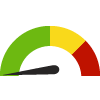




U.S. States
The distribution is based on data from 49 U.S. states and the District of Columbia.

US Value
(1.7)
The regional value is compared to the national value.

Prior Value
(0.1)
Prior Value compares a measured value with the previously measured value. Confidence intervals were not taken into account in determining the direction of the comparison.

Trend
This comparison measures the indicator’s values over multiple time periods.<br>The Mann-Kendall Test for Statistical Significance is used to evaluate the trend<br>over 4 to 10 periods of measure, subject to data availability and comparability.
State: Ohio COVID-19 Daily Average Incidence Rate
State: Ohio COVID-19 Daily Average Incidence Rate
11.68
Cases per 100,000 population
(Mar 3, 2023)
Compared to:





U.S. States
The distribution is based on data from 50 U.S. states and the District of Columbia.

US Value
(10.97)
The regional value is compared to the national value.

Prior Value
(11.65)
Prior Value compares a measured value with the previously measured value. Confidence intervals were not taken into account in determining the direction of the comparison.

Trend
This comparison measures the indicator’s values over multiple time periods.<br>The Mann-Kendall Test for Statistical Significance is used to evaluate the trend<br>over 4 to 10 periods of measure, subject to data availability and comparability.
State: Ohio Flu Vaccinations: Medicare Population
State: Ohio Flu Vaccinations: Medicare Population
53.0%
(2022)
Compared to:
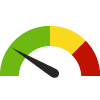




U.S. States
The distribution is based on data from 50 U.S. states and the District of Columbia.

US Value
(50.0%)
The regional value is compared to the national value.

Prior Value
(52.0%)
Prior Value compares a measured value with the previously measured value. Confidence intervals were not taken into account in determining the direction of the comparison.

Trend
This comparison measures the indicator’s values over multiple time periods.<br>The Mann-Kendall Test for Statistical Significance is used to evaluate the trend<br>over 4 to 10 periods of measure, subject to data availability and comparability.
State: Ohio Pneumonia Vaccinations: Medicare Population
State: Ohio Pneumonia Vaccinations: Medicare Population
8.0%
(2022)
Compared to:
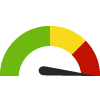




U.S. States
The distribution is based on data from 50 U.S. states and the District of Columbia.

US Value
(8.0%)
The regional value is compared to the national value.

Prior Value
(6.0%)
Prior Value compares a measured value with the previously measured value. Confidence intervals were not taken into account in determining the direction of the comparison.

Trend
This comparison measures the indicator’s values over multiple time periods.<br>The Mann-Kendall Test for Statistical Significance is used to evaluate the trend<br>over 4 to 10 periods of measure, subject to data availability and comparability.
State: Ohio Tuberculosis Incidence Rate
State: Ohio Tuberculosis Incidence Rate
1.2
Cases per 100,000 population
(2022)
Compared to:





US Value
(2.4 in 2021)
The regional value is compared to the national value. The source for the national value is Centers for Disease Control and Prevention

Prior Value
(1.3)
Prior Value compares a measured value with the previously measured value. Confidence intervals were not taken into account in determining the direction of the comparison.

Trend
This comparison measures the indicator’s values over multiple time periods.<br>The Mann-Kendall Test for Statistical Significance is used to evaluate the trend<br>over 4 to 10 periods of measure, subject to data availability and comparability.

HP 2030 Target
(1.4)
State: Ohio
Health / Maternal, Fetal & Infant Health
Value
Compared to:
State: Ohio Babies with Low Birthweight
State: Ohio Babies with Low Birthweight
8.7%
(2022)
Compared to:




US Value
(8.5% in 2021)
The regional value is compared to the national value. The source for the national value is Centers for Disease Control and Prevention

Prior Value
(8.7%)
Prior Value compares a measured value with the previously measured value. Confidence intervals were not taken into account in determining the direction of the comparison.

Trend
This comparison measures the indicator’s values over multiple time periods.<br>The Mann-Kendall Test for Statistical Significance is used to evaluate the trend<br>over 4 to 10 periods of measure, subject to data availability and comparability.
State: Ohio Babies with Very Low Birthweight
State: Ohio Babies with Very Low Birthweight
1.5%
(2022)
Compared to:




US Value
(1.4% in 2021)
The regional value is compared to the national value. The source for the national value is Centers for Disease Control and Prevention

Prior Value
(1.5%)
Prior Value compares a measured value with the previously measured value. Confidence intervals were not taken into account in determining the direction of the comparison.

Trend
This comparison measures the indicator’s values over multiple time periods.<br>The Mann-Kendall Test for Statistical Significance is used to evaluate the trend<br>over 4 to 10 periods of measure, subject to data availability and comparability.
State: Ohio Breastfeeding at 8 Weeks
State: Ohio Breastfeeding at 8 Weeks
70.9%
(2022)
Compared to:



Prior Value
(65.2%)
Prior Value compares a measured value with the previously measured value. Confidence intervals were taken into account in determining the direction of the comparison.

Trend
This comparison measures the indicator’s values over multiple time periods.<br>The Mann-Kendall Test for Statistical Significance is used to evaluate the trend<br>over 4 to 10 periods of measure, subject to data availability and comparability.
State: Ohio Chronic Health Condition(s) During Pregnancy
State: Ohio Chronic Health Condition(s) During Pregnancy
49.6%
(2022)
Compared to:



Prior Value
(51.1%)
Prior Value compares a measured value with the previously measured value. Confidence intervals were taken into account in determining the direction of the comparison.

Trend
This comparison measures the indicator’s values over multiple time periods.<br>The Mann-Kendall Test for Statistical Significance is used to evaluate the trend<br>over 4 to 10 periods of measure, subject to data availability and comparability.
State: Ohio Ever Breastfed New Infant
State: Ohio Ever Breastfed New Infant
88.7%
(2022)
Compared to:



Prior Value
(87.0%)
Prior Value compares a measured value with the previously measured value. Confidence intervals were taken into account in determining the direction of the comparison.

Trend
This comparison measures the indicator’s values over multiple time periods.<br>The Mann-Kendall Test for Statistical Significance is used to evaluate the trend<br>over 4 to 10 periods of measure, subject to data availability and comparability.
State: Ohio Gestational Depression
State: Ohio Gestational Depression
21.7%
(2022)
Compared to:



Prior Value
(22.8%)
Prior Value compares a measured value with the previously measured value. Confidence intervals were taken into account in determining the direction of the comparison.

Trend
This comparison measures the indicator’s values over multiple time periods.<br>The Mann-Kendall Test for Statistical Significance is used to evaluate the trend<br>over 4 to 10 periods of measure, subject to data availability and comparability.
State: Ohio Gestational Diabetes
State: Ohio Gestational Diabetes
10.6%
(2022)
Compared to:



Prior Value
(11.0%)
Prior Value compares a measured value with the previously measured value. Confidence intervals were taken into account in determining the direction of the comparison.

Trend
This comparison measures the indicator’s values over multiple time periods.<br>The Mann-Kendall Test for Statistical Significance is used to evaluate the trend<br>over 4 to 10 periods of measure, subject to data availability and comparability.
State: Ohio Gestational Hypertension
State: Ohio Gestational Hypertension
18.3%
(2022)
Compared to:



Prior Value
(17.8%)
Prior Value compares a measured value with the previously measured value. Confidence intervals were taken into account in determining the direction of the comparison.

Trend
This comparison measures the indicator’s values over multiple time periods.<br>The Mann-Kendall Test for Statistical Significance is used to evaluate the trend<br>over 4 to 10 periods of measure, subject to data availability and comparability.
State: Ohio Infant Mortality Rate
State: Ohio Infant Mortality Rate
6.7
Deaths per 1,000 live births
(2020)
Compared to:





US Value
(5.4)
The regional value is compared to the national value. The source for the national value is Centers for Disease Control and Prevention

Prior Value
(6.9)
Prior Value compares a measured value with the previously measured value. Confidence intervals were not taken into account in determining the direction of the comparison.

Trend
This comparison measures the indicator’s values over multiple time periods.<br>The Mann-Kendall Test for Statistical Significance is used to evaluate the trend<br>over 4 to 10 periods of measure, subject to data availability and comparability.

HP 2030 Target
(5.0)
<div>MICH-02: Reduce the rate of infant deaths <strong>(LEADING HEALTH INDICATOR)</strong></div>
State: Ohio Infant Sleeps Alone
State: Ohio Infant Sleeps Alone
69.7%
(2022)
Compared to:



Prior Value
(68.3%)
Prior Value compares a measured value with the previously measured value. Confidence intervals were taken into account in determining the direction of the comparison.

Trend
This comparison measures the indicator’s values over multiple time periods.<br>The Mann-Kendall Test for Statistical Significance is used to evaluate the trend<br>over 4 to 10 periods of measure, subject to data availability and comparability.
State: Ohio Infant Sleeps Alone on Recommended Surface
State: Ohio Infant Sleeps Alone on Recommended Surface
51.4%
(2022)
Compared to:



Prior Value
(48.6%)
Prior Value compares a measured value with the previously measured value. Confidence intervals were taken into account in determining the direction of the comparison.

Trend
This comparison measures the indicator’s values over multiple time periods.<br>The Mann-Kendall Test for Statistical Significance is used to evaluate the trend<br>over 4 to 10 periods of measure, subject to data availability and comparability.
State: Ohio Infant Sleeps in Crib, Bassinet, or Play Yard
State: Ohio Infant Sleeps in Crib, Bassinet, or Play Yard
93.9%
(2022)
Compared to:



Prior Value
(93.6%)
Prior Value compares a measured value with the previously measured value. Confidence intervals were taken into account in determining the direction of the comparison.

Trend
This comparison measures the indicator’s values over multiple time periods.<br>The Mann-Kendall Test for Statistical Significance is used to evaluate the trend<br>over 4 to 10 periods of measure, subject to data availability and comparability.
State: Ohio Infant Sleeps on Back
State: Ohio Infant Sleeps on Back
86.2%
(2022)
Compared to:



Prior Value
(88.8%)
Prior Value compares a measured value with the previously measured value. Confidence intervals were taken into account in determining the direction of the comparison.

Trend
This comparison measures the indicator’s values over multiple time periods.<br>The Mann-Kendall Test for Statistical Significance is used to evaluate the trend<br>over 4 to 10 periods of measure, subject to data availability and comparability.
State: Ohio Infant Sleeps Without Objects in Bed
State: Ohio Infant Sleeps Without Objects in Bed
68.7%
(2022)
Compared to:



Prior Value
(67.0%)
Prior Value compares a measured value with the previously measured value. Confidence intervals were taken into account in determining the direction of the comparison.

Trend
This comparison measures the indicator’s values over multiple time periods.<br>The Mann-Kendall Test for Statistical Significance is used to evaluate the trend<br>over 4 to 10 periods of measure, subject to data availability and comparability.
State: Ohio Mothers who Received Early Prenatal Care
State: Ohio Mothers who Received Early Prenatal Care
68.6%
(2022)
Compared to:




US Value
(78.3% in 2021)
The regional value is compared to the national value. The source for the national value is Centers for Disease Control and Prevention

Prior Value
(70.1%)
Prior Value compares a measured value with the previously measured value. Confidence intervals were not taken into account in determining the direction of the comparison.

Trend
This comparison measures the indicator’s values over multiple time periods.<br>The Mann-Kendall Test for Statistical Significance is used to evaluate the trend<br>over 4 to 10 periods of measure, subject to data availability and comparability.
State: Ohio Mothers who Smoked During Pregnancy
State: Ohio Mothers who Smoked During Pregnancy
7.9%
(2022)
Compared to:





US Value
(4.6% in 2021)
The regional value is compared to the national value. The source for the national value is Centers for Disease Control and Prevention

Prior Value
(9.4%)
Prior Value compares a measured value with the previously measured value. Confidence intervals were not taken into account in determining the direction of the comparison.

Trend
This comparison measures the indicator’s values over multiple time periods.<br>The Mann-Kendall Test for Statistical Significance is used to evaluate the trend<br>over 4 to 10 periods of measure, subject to data availability and comparability.

HP 2030 Target
(4.3%)
State: Ohio Pre-Pregnancy Depression
State: Ohio Pre-Pregnancy Depression
22.5%
(2022)
Compared to:



Prior Value
(24.9%)
Prior Value compares a measured value with the previously measured value. Confidence intervals were taken into account in determining the direction of the comparison.

Trend
This comparison measures the indicator’s values over multiple time periods.<br>The Mann-Kendall Test for Statistical Significance is used to evaluate the trend<br>over 4 to 10 periods of measure, subject to data availability and comparability.
State: Ohio Pre-Pregnancy Diabetes
State: Ohio Pre-Pregnancy Diabetes
4.2%
(2022)
Compared to:



Prior Value
(2.7%)
Prior Value compares a measured value with the previously measured value. Confidence intervals were taken into account in determining the direction of the comparison.

Trend
This comparison measures the indicator’s values over multiple time periods.<br>The Mann-Kendall Test for Statistical Significance is used to evaluate the trend<br>over 4 to 10 periods of measure, subject to data availability and comparability.
State: Ohio Pre-Pregnancy Hypertension
State: Ohio Pre-Pregnancy Hypertension
7.0%
(2022)
Compared to:



Prior Value
(6.4%)
Prior Value compares a measured value with the previously measured value. Confidence intervals were taken into account in determining the direction of the comparison.

Trend
This comparison measures the indicator’s values over multiple time periods.<br>The Mann-Kendall Test for Statistical Significance is used to evaluate the trend<br>over 4 to 10 periods of measure, subject to data availability and comparability.
State: Ohio Preterm Births
State: Ohio Preterm Births
10.8%
(2022)
Compared to:




Prior Value
(10.6%)
Prior Value compares a measured value with the previously measured value. Confidence intervals were not taken into account in determining the direction of the comparison.

Trend
This comparison measures the indicator’s values over multiple time periods.<br>The Mann-Kendall Test for Statistical Significance is used to evaluate the trend<br>over 4 to 10 periods of measure, subject to data availability and comparability.

HP 2030 Target
(9.4%)
State: Ohio Prevalence of Intended Pregnancy
State: Ohio Prevalence of Intended Pregnancy
61.0%
(2022)
Compared to:



Prior Value
(58.8%)
Prior Value compares a measured value with the previously measured value. Confidence intervals were taken into account in determining the direction of the comparison.

Trend
This comparison measures the indicator’s values over multiple time periods.<br>The Mann-Kendall Test for Statistical Significance is used to evaluate the trend<br>over 4 to 10 periods of measure, subject to data availability and comparability.
State: Ohio Prevalence of Unintended Pregnancy
State: Ohio Prevalence of Unintended Pregnancy
21.1%
(2022)
Compared to:



Prior Value
(24.0%)
Prior Value compares a measured value with the previously measured value. Confidence intervals were taken into account in determining the direction of the comparison.

Trend
This comparison measures the indicator’s values over multiple time periods.<br>The Mann-Kendall Test for Statistical Significance is used to evaluate the trend<br>over 4 to 10 periods of measure, subject to data availability and comparability.
State: Ohio Prevalence of Unsure Intention Pregnancy
State: Ohio Prevalence of Unsure Intention Pregnancy
17.8%
(2022)
Compared to:



Prior Value
(17.2%)
Prior Value compares a measured value with the previously measured value. Confidence intervals were taken into account in determining the direction of the comparison.

Trend
This comparison measures the indicator’s values over multiple time periods.<br>The Mann-Kendall Test for Statistical Significance is used to evaluate the trend<br>over 4 to 10 periods of measure, subject to data availability and comparability.
State: Ohio Stopped Breastfeeding Due to Resuming Work
State: Ohio Stopped Breastfeeding Due to Resuming Work
17.5%
(2022)
Compared to:



Prior Value
(17.6%)
Prior Value compares a measured value with the previously measured value. Confidence intervals were taken into account in determining the direction of the comparison.

Trend
This comparison measures the indicator’s values over multiple time periods.<br>The Mann-Kendall Test for Statistical Significance is used to evaluate the trend<br>over 4 to 10 periods of measure, subject to data availability and comparability.
State: Ohio
Health / Medications & Prescriptions
Value
Compared to:
15.1%
(2023)
Compared to:



US Value
(14.9%)
The regional value is compared to the national value.

Prior Value
(15.1%)
Prior Value compares a measured value with the previously measured value. Confidence intervals were not taken into account in determining the direction of the comparison.
State: Ohio
Health / Mental Health & Mental Disorders
Value
Compared to:
State: Ohio Age-Adjusted Death Rate due to Suicide
State: Ohio Age-Adjusted Death Rate due to Suicide
14.5
Deaths per 100,000 population
(2020-2022)
Compared to:




Prior Value
(14.6)
Prior Value compares a measured value with the previously measured value. Confidence intervals were not taken into account in determining the direction of the comparison.

Trend
This comparison measures the indicator’s values over multiple time periods.<br>The Mann-Kendall Test for Statistical Significance is used to evaluate the trend<br>over 4 to 10 periods of measure, subject to data availability and comparability.

HP 2030 Target
(12.8)
<div>MHMD-01: Reduce the suicide rate <strong>(LEADING HEALTH INDICATOR)</strong></div>
State: Ohio Depression: Medicare Population
State: Ohio Depression: Medicare Population
17.0%
(2022)
Compared to:





U.S. States
The distribution is based on data from 50 U.S. states and the District of Columbia.

US Value
(16.0%)
The regional value is compared to the national value.

Prior Value
(17.0%)
Prior Value compares a measured value with the previously measured value. Confidence intervals were not taken into account in determining the direction of the comparison.

Trend
This comparison measures the indicator’s values over multiple time periods.<br>The Mann-Kendall Test for Statistical Significance is used to evaluate the trend<br>over 4 to 10 periods of measure, subject to data availability and comparability.
State: Ohio Frequent Mental Distress
State: Ohio Frequent Mental Distress
17.1%
(2019)
Compared to:




U.S. States
The distribution is based on data from 49 U.S. states and the District of Columbia.

US Value
(14.0%)
The regional value is compared to the national value.

Prior Value
(15.5%)
Prior Value compares a measured value with the previously measured value. Confidence intervals were taken into account in determining the direction of the comparison.
State: Ohio High School Students Who Attempted Suicide
State: Ohio High School Students Who Attempted Suicide
9.5%
(2021)
Compared to:




U.S. States
The distribution is based on data from 42 U.S. states and the District of Columbia.

US Value
(10.2%)
The regional value is compared to the national value.

Prior Value
(6.8%)
Prior Value compares a measured value with the previously measured value. Confidence intervals were taken into account in determining the direction of the comparison.
8.5%
(2023)
Compared to:




US Value
(8.8%)
The regional value is compared to the national value.

Prior Value
(7.7%)
Prior Value compares a measured value with the previously measured value. Confidence intervals were not taken into account in determining the direction of the comparison.

Trend
This comparison measures the indicator’s values over multiple time periods.<br>The Mann-Kendall Test for Statistical Significance is used to evaluate the trend<br>over 4 to 10 periods of measure, subject to data availability and comparability.
State: Ohio Mental Health Provider Rate
State: Ohio Mental Health Provider Rate
326
Providers per 100,000 population
(2023)
Compared to:




U.S. States
The distribution is based on data from 50 U.S. states and the District of Columbia.

Prior Value
(304)
Prior Value compares a measured value with the previously measured value. Confidence intervals were not taken into account in determining the direction of the comparison.

Trend
This comparison measures the indicator’s values over multiple time periods.<br>The Mann-Kendall Test for Statistical Significance is used to evaluate the trend<br>over 4 to 10 periods of measure, subject to data availability and comparability.
State: Ohio Poor Mental Health: Average Number of Days
State: Ohio Poor Mental Health: Average Number of Days
5.5
Days
(2021)
Compared to:





U.S. States
The distribution is based on data from 50 U.S. states and the District of Columbia.

US Value
(4.8)
The regional value is compared to the national value.

Prior Value
(5.0)
Prior Value compares a measured value with the previously measured value. Confidence intervals were taken into account in determining the direction of the comparison.

Trend
This comparison measures the indicator’s values over multiple time periods.<br>The Mann-Kendall Test for Statistical Significance is used to evaluate the trend<br>over 4 to 10 periods of measure, subject to data availability and comparability.
State: Ohio
Health / Mortality Data
Value
Compared to:
State: Ohio Life Expectancy
State: Ohio Life Expectancy
75.6
Years
(2019-2021)
Compared to:



U.S. States
The distribution is based on data from 50 U.S. states and the District of Columbia.

US Value
(77.6)
The regional value is compared to the national value.
State: Ohio Premature Death
State: Ohio Premature Death
9,394.3
Years per 100,000 population
(2019-2021)
Compared to:



U.S. States
The distribution is based on data from 50 U.S. states and the District of Columbia.

US Value
(7,971.5)
The regional value is compared to the national value.
State: Ohio
Health / Nutrition & Healthy Eating
Value
Compared to:
State: Ohio Adults who Drank Soft Drinks: Past 7 Days
State: Ohio Adults who Drank Soft Drinks: Past 7 Days
44.6%
(2023)
Compared to:


US Value
(43.7%)
The regional value is compared to the national value.
40.1%
(2023)
Compared to:





U.S. States
The distribution is based on data from 50 U.S. states and the District of Columbia.

US Value
(40.4%)
The regional value is compared to the national value.

Prior Value
(40.6%)
Prior Value compares a measured value with the previously measured value. Confidence intervals were not taken into account in determining the direction of the comparison.

Trend
This comparison measures the indicator’s values over multiple time periods.<br>The Mann-Kendall Test for Statistical Significance is used to evaluate the trend<br>over 4 to 10 periods of measure, subject to data availability and comparability.
State: Ohio Teen Fruit Consumption
State: Ohio Teen Fruit Consumption
19.5%
(2021)
Compared to:



US Value
(24.2%)
The regional value is compared to the national value.

Prior Value
(22.9%)
Prior Value compares a measured value with the previously measured value. Confidence intervals were taken into account in determining the direction of the comparison.
State: Ohio Teen Vegetable Consumption
State: Ohio Teen Vegetable Consumption
7.1%
(2021)
Compared to:




U.S. States
The distribution is based on data from 35 U.S. states.

US Value
(11.2%)
The regional value is compared to the national value.

Prior Value
(11.1%)
Prior Value compares a measured value with the previously measured value. Confidence intervals were taken into account in determining the direction of the comparison.
State: Ohio
Health / Older Adults
Value
Compared to:
State: Ohio Adult Day Care Spending-to-Income Ratio
State: Ohio Adult Day Care Spending-to-Income Ratio
11.8%
(2023)
Compared to:



U.S. States
The distribution is based on data from 50 U.S. states and the District of Columbia.

Prior Value
(11.9%)
Prior Value compares a measured value with the previously measured value. Confidence intervals were not taken into account in determining the direction of the comparison.
State: Ohio Adults 65+ with a Disability
State: Ohio Adults 65+ with a Disability
33.2%
(2018-2022)
Compared to:



US Value
(33.3%)
The regional value is compared to the national value.

Trend
This comparison measures the indicator’s values over multiple time periods.<br>The Mann-Kendall Test for Statistical Significance is used to evaluate the trend<br>over 4 to 10 periods of measure, subject to data availability and comparability.
State: Ohio Adults 65+ with a Hearing Difficulty
State: Ohio Adults 65+ with a Hearing Difficulty
13.5%
(2018-2022)
Compared to:



US Value
(13.7%)
The regional value is compared to the national value.

Trend
This comparison measures the indicator’s values over multiple time periods.<br>The Mann-Kendall Test for Statistical Significance is used to evaluate the trend<br>over 4 to 10 periods of measure, subject to data availability and comparability.
State: Ohio Adults 65+ with a Self-Care Difficulty
State: Ohio Adults 65+ with a Self-Care Difficulty
6.7%
(2018-2022)
Compared to:



US Value
(7.4%)
The regional value is compared to the national value.

Trend
This comparison measures the indicator’s values over multiple time periods.<br>The Mann-Kendall Test for Statistical Significance is used to evaluate the trend<br>over 4 to 10 periods of measure, subject to data availability and comparability.
State: Ohio Adults 65+ with a Vision Difficulty
State: Ohio Adults 65+ with a Vision Difficulty
5.7%
(2018-2022)
Compared to:



US Value
(6.0%)
The regional value is compared to the national value.

Trend
This comparison measures the indicator’s values over multiple time periods.<br>The Mann-Kendall Test for Statistical Significance is used to evaluate the trend<br>over 4 to 10 periods of measure, subject to data availability and comparability.
State: Ohio Adults 65+ with an Independent Living Difficulty
State: Ohio Adults 65+ with an Independent Living Difficulty
12.9%
(2018-2022)
Compared to:



US Value
(13.6%)
The regional value is compared to the national value.

Trend
This comparison measures the indicator’s values over multiple time periods.<br>The Mann-Kendall Test for Statistical Significance is used to evaluate the trend<br>over 4 to 10 periods of measure, subject to data availability and comparability.
33.8
Deaths per 100,000 population
(2020-2022)
Compared to:



Prior Value
(34.5)
Prior Value compares a measured value with the previously measured value. Confidence intervals were not taken into account in determining the direction of the comparison.

Trend
This comparison measures the indicator’s values over multiple time periods.<br>The Mann-Kendall Test for Statistical Significance is used to evaluate the trend<br>over 4 to 10 periods of measure, subject to data availability and comparability.
6.0%
(2022)
Compared to:





U.S. States
The distribution is based on data from 50 U.S. states and the District of Columbia.

US Value
(6.0%)
The regional value is compared to the national value.

Prior Value
(6.0%)
Prior Value compares a measured value with the previously measured value. Confidence intervals were not taken into account in determining the direction of the comparison.

Trend
This comparison measures the indicator’s values over multiple time periods.<br>The Mann-Kendall Test for Statistical Significance is used to evaluate the trend<br>over 4 to 10 periods of measure, subject to data availability and comparability.
State: Ohio Grandparents Living in a Household
State: Ohio Grandparents Living in a Household
3.0%
(2018-2022)
Compared to:




US Value
(3.8%)
The regional value is compared to the national value.

Prior Value
(3.1%)
Prior Value compares a measured value with the previously measured value. Confidence intervals were not taken into account in determining the direction of the comparison.

Trend
This comparison measures the indicator’s values over multiple time periods.<br>The Mann-Kendall Test for Statistical Significance is used to evaluate the trend<br>over 4 to 10 periods of measure, subject to data availability and comparability.
State: Ohio Median Household Income: Householders 65+
State: Ohio Median Household Income: Householders 65+
$49,800
(2018-2022)
Compared to:




U.S. States
The distribution is based on data from 50 U.S. states and the District of Columbia.

US Value
($54,699)
The regional value is compared to the national value.

Trend
This comparison measures the indicator’s values over multiple time periods.<br>The Mann-Kendall Test for Statistical Significance is used to evaluate the trend<br>over 4 to 10 periods of measure, subject to data availability and comparability.
State: Ohio
Health / Oral Health
Value
Compared to:
State: Ohio Adults who Visited a Dentist
State: Ohio Adults who Visited a Dentist
50.0%
(2023)
Compared to:





U.S. States
The distribution is based on data from 50 U.S. states and the District of Columbia.

US Value
(51.2%)
The regional value is compared to the national value.

Prior Value
(49.2%)
Prior Value compares a measured value with the previously measured value. Confidence intervals were not taken into account in determining the direction of the comparison.

Trend
This comparison measures the indicator’s values over multiple time periods.<br>The Mann-Kendall Test for Statistical Significance is used to evaluate the trend<br>over 4 to 10 periods of measure, subject to data availability and comparability.
State: Ohio Dentist Rate
State: Ohio Dentist Rate
65
Dentists per 100,000 population
(2022)
Compared to:




U.S. States
The distribution is based on data from 50 U.S. states and the District of Columbia.

Prior Value
(64)
Prior Value compares a measured value with the previously measured value. Confidence intervals were not taken into account in determining the direction of the comparison.

Trend
This comparison measures the indicator’s values over multiple time periods.<br>The Mann-Kendall Test for Statistical Significance is used to evaluate the trend<br>over 4 to 10 periods of measure, subject to data availability and comparability.
State: Ohio
Health / Other Conditions
Value
Compared to:
State: Ohio Adults Who Visited a Dermatologist
State: Ohio Adults Who Visited a Dermatologist
15.4%
(2023)
Compared to:




US Value
(15.9%)
The regional value is compared to the national value.

Prior Value
(14.5%)
Prior Value compares a measured value with the previously measured value. Confidence intervals were not taken into account in determining the direction of the comparison.

Trend
This comparison measures the indicator’s values over multiple time periods.<br>The Mann-Kendall Test for Statistical Significance is used to evaluate the trend<br>over 4 to 10 periods of measure, subject to data availability and comparability.
State: Ohio Age-Adjusted Death Rate due to Kidney Disease
State: Ohio Age-Adjusted Death Rate due to Kidney Disease
15.1
Deaths per 100,000 population
(2020-2022)
Compared to:



Prior Value
(14.3)
Prior Value compares a measured value with the previously measured value. Confidence intervals were not taken into account in determining the direction of the comparison.

Trend
This comparison measures the indicator’s values over multiple time periods.<br>The Mann-Kendall Test for Statistical Significance is used to evaluate the trend<br>over 4 to 10 periods of measure, subject to data availability and comparability.
State: Ohio Chronic Kidney Disease: Medicare Population
State: Ohio Chronic Kidney Disease: Medicare Population
18.0%
(2022)
Compared to:





U.S. States
The distribution is based on data from 50 U.S. states and the District of Columbia.

US Value
(18.0%)
The regional value is compared to the national value.

Prior Value
(17.0%)
Prior Value compares a measured value with the previously measured value. Confidence intervals were not taken into account in determining the direction of the comparison.

Trend
This comparison measures the indicator’s values over multiple time periods.<br>The Mann-Kendall Test for Statistical Significance is used to evaluate the trend<br>over 4 to 10 periods of measure, subject to data availability and comparability.
State: Ohio Osteoporosis: Medicare Population
State: Ohio Osteoporosis: Medicare Population
11.0%
(2022)
Compared to:





U.S. States
The distribution is based on data from 50 U.S. states and the District of Columbia.

US Value
(11.0%)
The regional value is compared to the national value.

Prior Value
(10.0%)
Prior Value compares a measured value with the previously measured value. Confidence intervals were not taken into account in determining the direction of the comparison.

Trend
This comparison measures the indicator’s values over multiple time periods.<br>The Mann-Kendall Test for Statistical Significance is used to evaluate the trend<br>over 4 to 10 periods of measure, subject to data availability and comparability.
38.0%
(2022)
Compared to:





U.S. States
The distribution is based on data from 50 U.S. states and the District of Columbia.

US Value
(35.0%)
The regional value is compared to the national value.

Prior Value
(37.0%)
Prior Value compares a measured value with the previously measured value. Confidence intervals were not taken into account in determining the direction of the comparison.

Trend
This comparison measures the indicator’s values over multiple time periods.<br>The Mann-Kendall Test for Statistical Significance is used to evaluate the trend<br>over 4 to 10 periods of measure, subject to data availability and comparability.
State: Ohio
Health / Physical Activity
Value
Compared to:
State: Ohio Adults who Follow a Regular Exercise Routine
State: Ohio Adults who Follow a Regular Exercise Routine
66.2%
(2023)
Compared to:



US Value
(67.2%)
The regional value is compared to the national value.

Prior Value
(54.8%)
Prior Value compares a measured value with the previously measured value. Confidence intervals were not taken into account in determining the direction of the comparison.
49.4%
(2021)
Compared to:




U.S. States
The distribution is based on data from 44 U.S. states and the District of Columbia.

US Value
(45.3%)
The regional value is compared to the national value.

Prior Value
(43.1%)
Prior Value compares a measured value with the previously measured value. Confidence intervals were taken into account in determining the direction of the comparison.
State: Ohio
Health / Prevention & Safety
Value
Compared to:
State: Ohio Age-Adjusted Death Rate due to Falls
State: Ohio Age-Adjusted Death Rate due to Falls
12.1
Deaths per 100,000 population
(2020-2022)
Compared to:



Prior Value
(11.6)
Prior Value compares a measured value with the previously measured value. Confidence intervals were not taken into account in determining the direction of the comparison.

Trend
This comparison measures the indicator’s values over multiple time periods.<br>The Mann-Kendall Test for Statistical Significance is used to evaluate the trend<br>over 4 to 10 periods of measure, subject to data availability and comparability.
State: Ohio Age-Adjusted Death Rate due to Firearms
State: Ohio Age-Adjusted Death Rate due to Firearms
13.5
Deaths per 100,000 population
(2018-2020)
Compared to:






U.S. States
The distribution is based on data from 50 U.S. states and the District of Columbia.

US Value
(12.0)
The regional value is compared to the national value.

Prior Value
(13.0)
Prior Value compares a measured value with the previously measured value. Confidence intervals were taken into account in determining the direction of the comparison.

Trend
This comparison measures the indicator’s values over multiple time periods.<br>The Mann-Kendall Test for Statistical Significance is used to evaluate the trend<br>over 4 to 10 periods of measure, subject to data availability and comparability.

HP 2030 Target
(10.7)
69.9
Deaths per 100,000 population
(2018-2020)
Compared to:






U.S. States
The distribution is based on data from 50 U.S. states and the District of Columbia.

US Value
(51.6)
The regional value is compared to the national value.

Prior Value
(68.8)
Prior Value compares a measured value with the previously measured value. Confidence intervals were taken into account in determining the direction of the comparison.

Trend
This comparison measures the indicator’s values over multiple time periods.<br>The Mann-Kendall Test for Statistical Significance is used to evaluate the trend<br>over 4 to 10 periods of measure, subject to data availability and comparability.

HP 2030 Target
(43.2)


